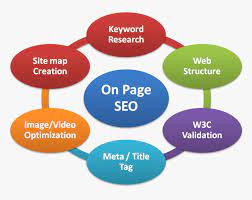Responsive website design - An Online Space and a Permanent Base
It's a basic premise, but one with a big payoff. Responsive web design is a technique that optimises website layout regardless of the device a user is using to explore. Depending on the device that is visiting the website, specific coding strategies guide it to resize, rearrange, or hide content.
We can design for the best viewing experience, but we can also incorporate standards-based technology into our designs to make them more adaptable to the media that shows them. In a nutshell, we must use responsive web design."was presenting a design concept that was adaptable. Prior to the availability of responsive Web Design service Pune, businesses could satisfy mobile customers by building a mobile-specific version of their website. A unique URL was used to identify these websites. com," for example, would have been "m.tillerdigital.com." However, there were certain drawbacks to this strategy:
• The user
found it inefficient. Because the browser had to figure out which website
version to load, page load times were long. Furthermore, the design was
frequently dissimilar to that of the PC version, which harmed brand
consistency.
• It took a
lot of time for businesses. • The mobile version didn't account for all of the
additional devices a user might want to use to access the website,
necessitating the establishment and operation of two different websites.
In-between-screen-size devices were left with unnecessarily disproportionate
designs.
Responsive Web Design Company Pune has now become the industry norm, ten years after Ethan 's groundbreaking article. Consider one of your favourite websites. You're probably using a site developed with responsive web design if you can easily identify crucial material on your desktop and mobile device without having to zoom in or scroll horizontally to find what you're looking for, and if your experience is equally as nice on your tablet as it is on your laptop.
Design
thinking is the key to responsive web
design, as it is a solutions-based approach that seeks to anticipate and
address the needs of the people for whom the design is being created. Design
thinking necessitates the consideration of questions such as:
• Access to the internet
• The size of the display
• Interaction type (touch screens, track pads)
• Graphic
quality.
A completely other website received traffic that was forwarded based on the user-agent.
However, in responsive web design (app design), the server sends the same HTML code to all devices and CSS is utilised to change how the page appears on the device.
Regardless of which of the two methodologies is used, the first step in developing a website for a phone or tablet is to verify that the browser understands the purpose. The viewport meta tag is used in this situation.

Comments
Post a Comment